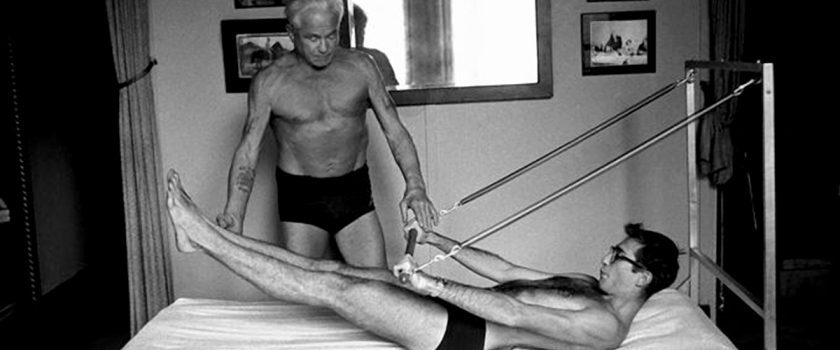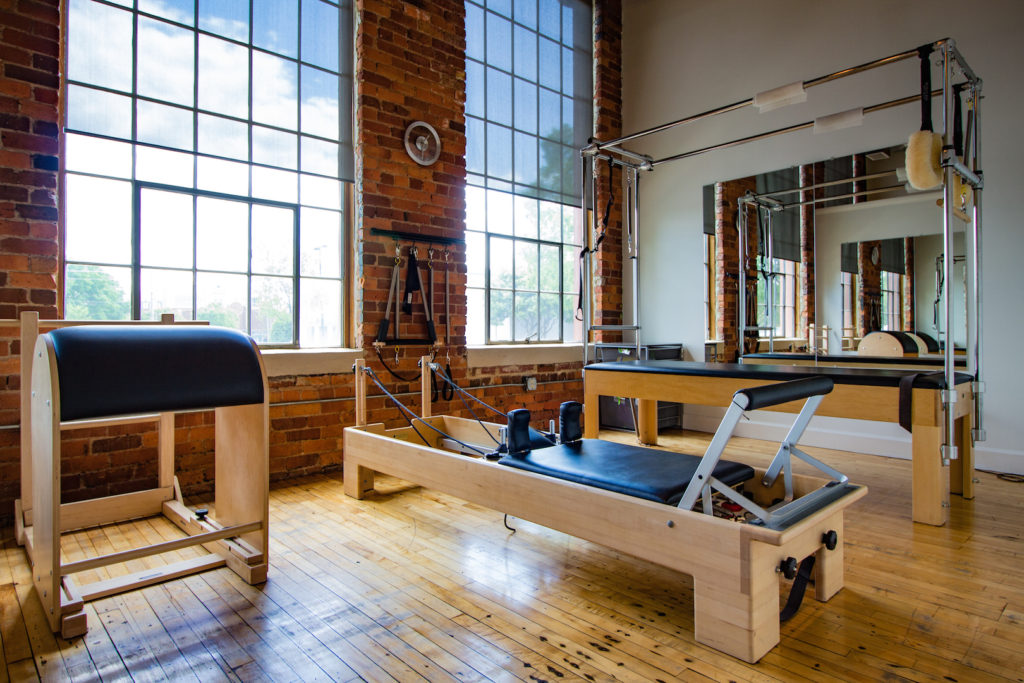Is this real Pilates?
Navigating any field that isn’t your expertise is always a challenge: what doctor do I see about this mole, how do I start my own company, or where can I get real Italian food? If you have ever been to more than one Pilates studio, you may have noticed differences that lead you to ask yourself, “Is this real Pilates?” In order to make your own conclusion, it’s important to know a bit of history of Pilates and to understand its origin.
Joseph Pilates (1880-1967) was a German physical fitness specialist who created a system of exercise that focuses on strength, flexibility and posture. During WWI, he restored mobility and health to injured soldiers by cleverly rigging the frames and springs of their hospital beds to their injured arms or legs. He then taught them exercises utilizing the resistance of the springs. (You may recognize the prototype of the hospital bed in the Cadillac.) Here lies an important piece of authentic Pilates – the system of movement Joseph Pilates created has an element of rehabilitation to it. The movement itself is absolutely considered exercise, yet instructors are trained to assess how bodies move in space taking into consideration injuries. A true Pilates instructor helps the client by giving verbal cues, hands on assists and is overall involved in the client’s progress. Take this into consideration when noting differences in studios – does the instructor seem tuned in and present with the client or simply just calling out an exercise and watching uninvolved, arms crossed?
Joseph Pilates emigrated to New York City in 1926 where he opened Studio on Eighth Avenue and taught “Contrology,” or Pilates as we know it today. Joseph Pilates always intended his work to be a marriage between the physical and mental. Quality of your physical sense increases the quality of your everyday life. This point of authentic Pilates sometimes gets fizzled away since a chiseled physique tends to be a more popular goal than a healthy mind. Keep this in mind when seeking a real Pilates studio – do the sessions/classes challenge both your physical and mental state or do they feel like a pushing, forced workout all concerned with the physical? If the instructor is barking out phrases like “push through the pain!”, odds are it’s not authentic Pilates. Overall, Joseph Pilates’ life long goal was to bring his method to the masses and have it practiced in schools, hospitals and gyms. He was a true visionary to create a unique form of exercise that would both stretch and strengthen the body.
Naturally, the Pilates Method has transformed over the years since Joseph’s death in 1967. Even though his Method continues to grow, many of his first generation teachers (or “elders”) believed Joe would have wanted his intention to remain the same and to include the founding principles of Pilates – Breathing, Muscle Balance, Concentration, Centering, Precision and Rhythm. A real Pilates studio should honor the Method as well as the man who created it. There are many studios claiming to teach Pilates but if you are interested in real Pilates, here are a few good tips to find a good studio:
- Training. A real Pilates studio should have their instructors certified through a reputable program which includes a minimum of 500+ hours of training, practice and student teaching. Read the instructors bio’s. How much experience do they have? Are there any specialty certifications?
- Variety of classes. A real Pilates studio should offer private, semi-priviate and group classes. There should be a variety of group classes and different levels offered. Reformer classes are the most popular but it’s refreshing to offer other equipment classes such as the Wunda Chair, Tower, and/or Springboard.
- Small class sizes. This is crucial. A real Pilates studio keeps group classes small (usually less than 6) so the instructor can monitor the safety of the class, give corrections, and offer personal attention.
- Access to a variety of equipment. A real Pilates studio has Reformers, Chairs, a Cadillac, Barrels, mats and even more!
Last October I was able to attend the Pilates Method Alliance Conference in California and had the privilege to speak with Lolita San Miguel. She is one of the only two Pilates elders officially certified by Joe himself. Lolita was a dancer who started Pilates in the late 1950’s and at the age of 83, has a sharp memory of what it was like in Joe’s studio. His studio was simple, quiet and private. No loud music, no large groups and you were there to work.
Because of a lawsuit in 2001, the word ‘Pilates’ is not trademarked, meaning anyone and everyone can call themselves a Pilates instructor. Now that you know what to look for in a qualified studio, a little research can go a long way while navigating your Pilates path. Find a studio that has a variety classes and equipment, small group classes, and quality instructors that you can connect with. With that, you are on your way to finding the beauty and strength of real Pilates.
Joelle Herman and Megan Gelabert


